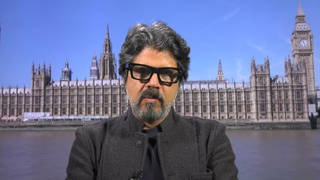This item from the Los Angeles Times. The Bush administration’s prewar claims that Saddam Hussein had built a fleet of trucks and railroad cars to produce anthrax and other deadly germs were based chiefly on information from a now-discredited Iraqi defector code-named “Curveball.” This according to current and former intelligence officials.
U.S. officials never had direct access to the defector, and didn’t even know his real name until after the war. Instead, his story was provided by German agents, and his file was so thick with detail that American officials thought it confirmed long-standing suspicions that the Iraqis had developed mobile germ factories to evade weapons inspections.
Curveball’s story has since crumbled under doubts raised by the Germans and the scrutiny of U.S. arms hunters, who have come to see his code name as particularly apt, given the problems that plagued much prewar intelligence collection and analysis.
United Nations weapons inspectors first hypothesized that such trucks might exist, officials said. Then they asked former exile leader Ahmed Chalabi, a bitter enemy of Hussein, to help search for intelligence supporting their theory.
Soon after, a young chemical engineer emerged in a German refugee camp and claimed he had been hired out of Baghdad University to design and build mobile biowarfare laboratories for the Iraqi army.
Based largely on his account, President George W. Bush and his aides repeatedly warned of the shadowy germ trucks, and they became a crucial part of the White House case for war–including Secretary of State Colin Powell’s presentation to the UN Security Council just weeks before the war began.
Only later, U.S. officials said, the CIA discovered that the defector is the brother of one of Chalabi’s top aides, and began suspecting that he might have been coached to provide false information. Partly as a result, some U.S. intelligence officials and congressional investigators fear the CIA inadvertently conjured up and then chased a phantom weapons system.
David Kay, who resigned in January as head of the CIA-led group created to find illicit weapons in Iraq, said that of all the intelligence failures in Iraq, the case of Curveball is particularly troubling.
Kay said “This is the one that’s damning.” This is the one that has the potential for causing the largest havoc in the sense that it really looks like a lack of due diligence and care in going forward.”










